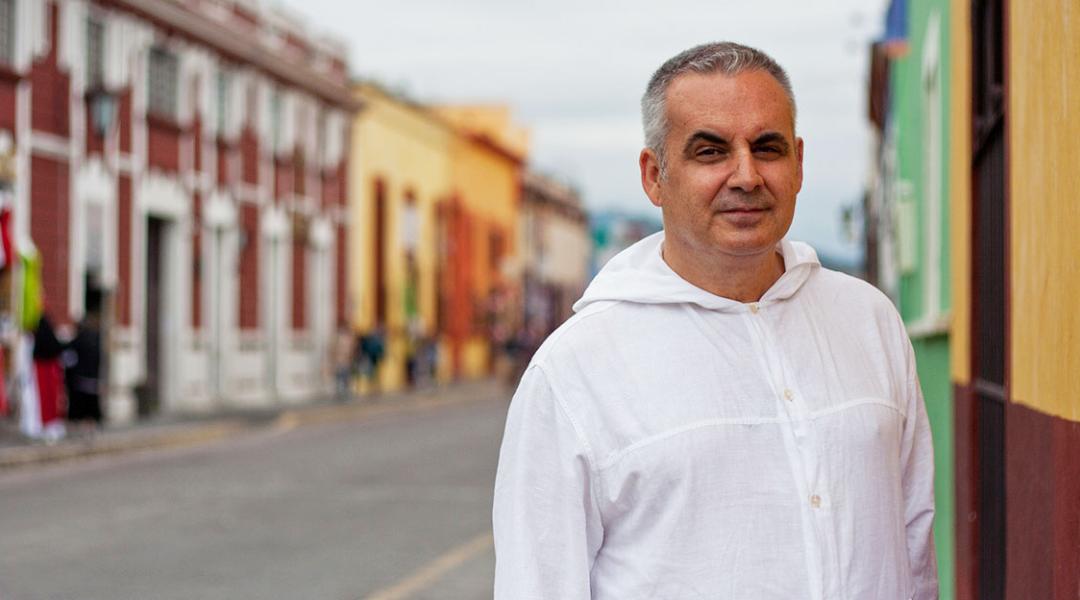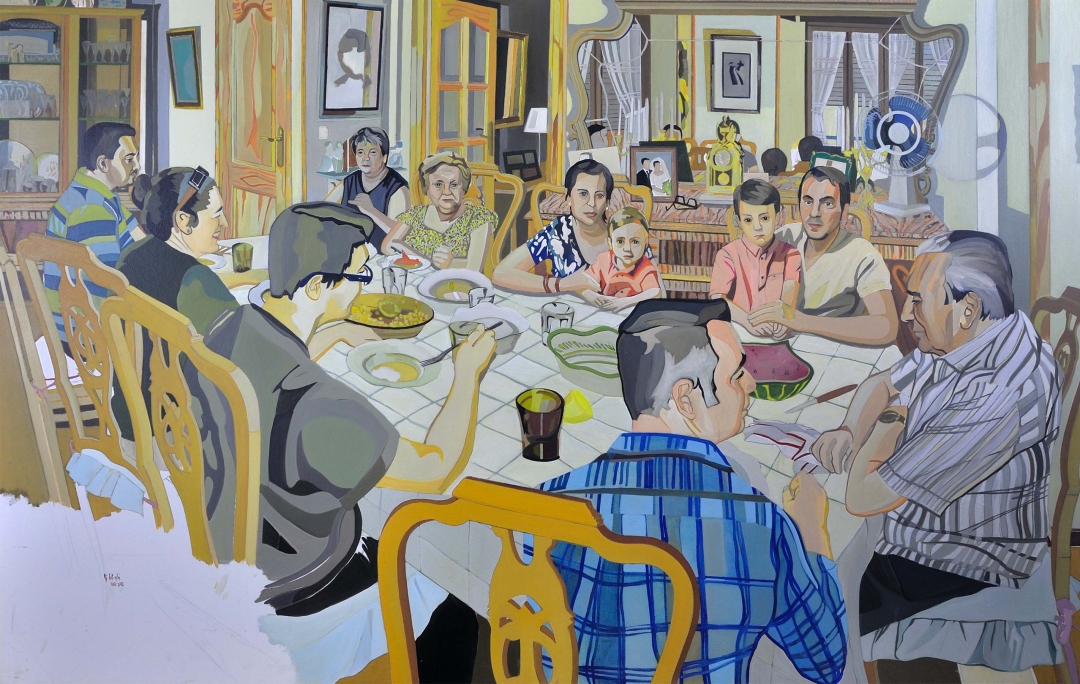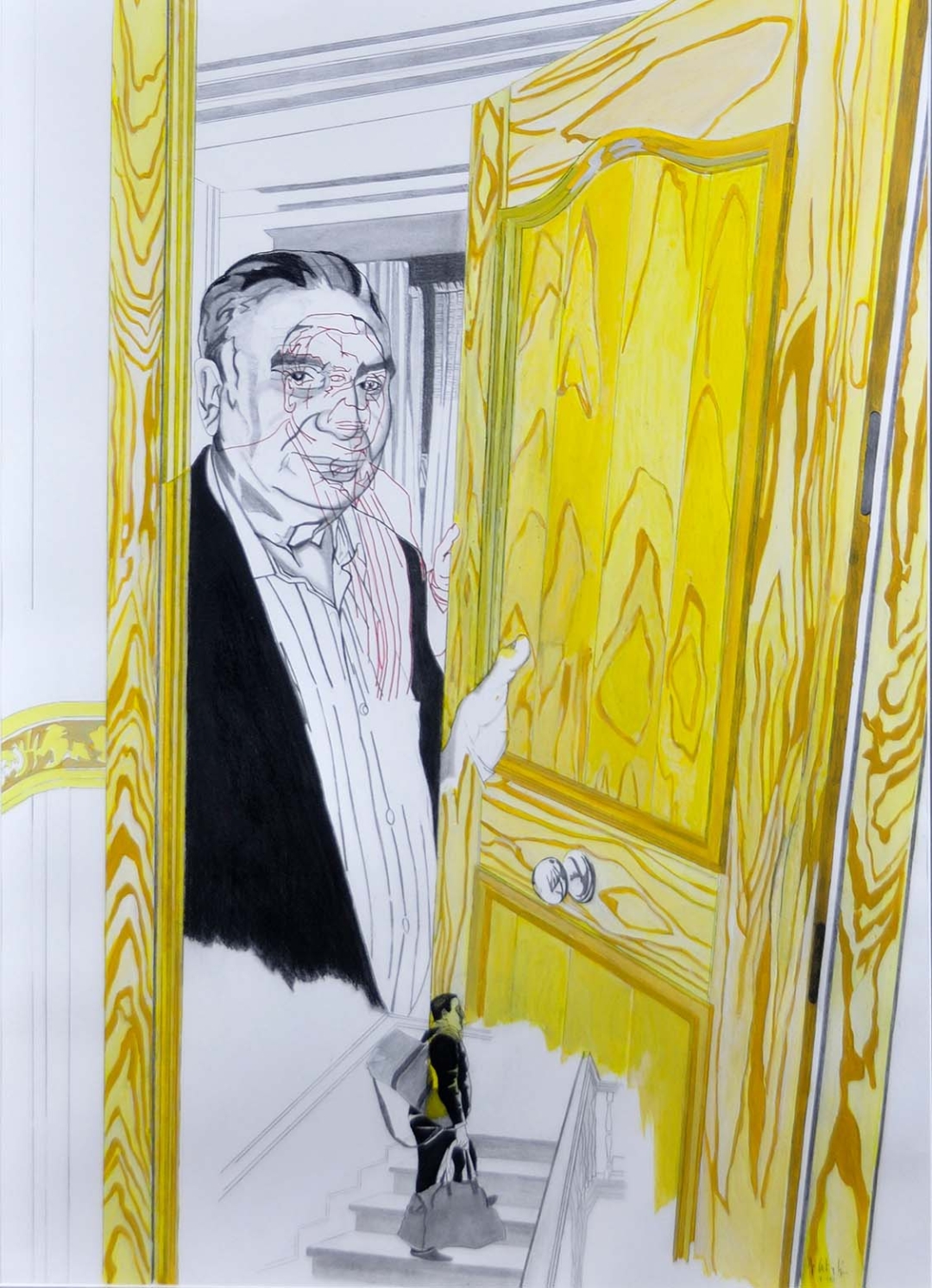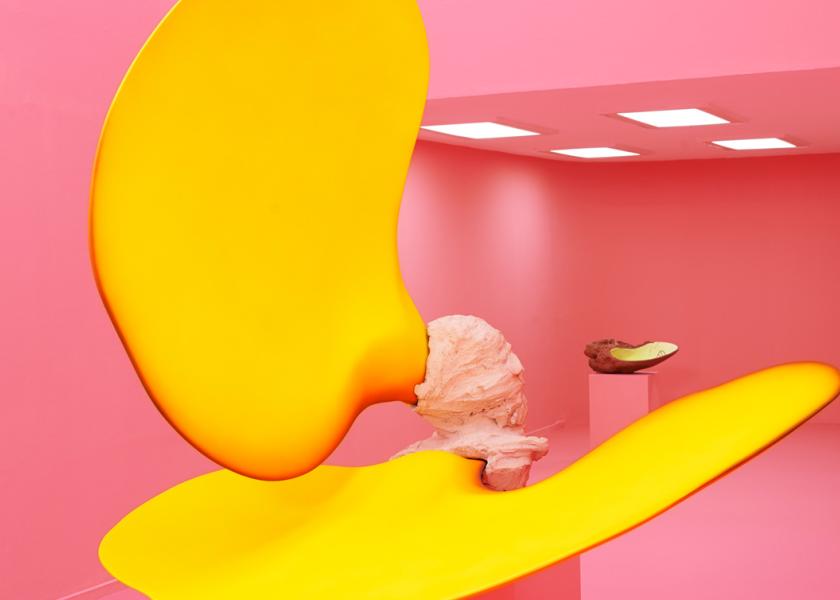Pepe Carretero
Living shamelessly

Autobiographical themes, dreamscapes, LGTBI, and even the most traditional Manchegan folklore make up Pep Carretero’s widely varying artistic universe. A unique painter not just because of his style, but because he knows how to interact with life’s truths really well by reflecting them on the canvas in an equally cheeky and delicate way.
Pepe Carretero (Tomelloso, 1962) tells the story that when he was really young, painter López Torres —uncle of hyperrealist Antonio López— approached him during a painting class and, after setting eyes on the painting he was creating, he predicted an unfavourable future for him. “I was painting a still life consisting of a pitcher, a plate, and an onion. I painted it my style, with some intense black spots that must have been terrible, and he foretold: you won’t get very far.” But the master made a mistake when assessing his talent. Today, Carretero’s work is part of collections at the Museo Nacional Centro de Arte Reina Sofía, the Banco de España, the Fundación Wellington, the Spanish Ministry of Foreign Affairs and the Spanish Royal Academy in Rome, among other institutions. A painter and poet —with three published—, he’s always been fiercely loyal to a personal discourse and strongly committed to equality. This November, the Biblioteca Iván de Vargas in Madrid brings together a vast selection of his paintings under the title Flores de este mundo [Flowers of this world].
Which is the message behind this exhibition?
That we all have, or should have, the same rights and the same opportunities just because we coexist in this world. For now, it’s just a utopia.
Which is the connection between the floral paintings and portraits that appear in this exhibition?
The idea of non-exclusion. This exhibition is sponsored by Transexualia, with whom I collaborate because I believe we must seek to fully integrate everyone in society to make it better and freer. My contribution is minimal, but decisive during times of not only financial but also existential cuts.
“I believe we must seek to fully integrate everyone in society to make it better and freer”
More pop paint strokes, but also intense Cubism. Which do you choose?
My work focuses, above all, on imagination and that defines me. According to art critics, my beginnings featured German and comic influences —a genre that, paradoxically, I’ve never read—. Now I’m immersed in LGTBI, autobiographical, and dreamscape themes. But when I sit down to paint in a relaxed manner, what Luis Gordillo calls "telephone doodles" emerge, i.e. painting without a preconceived idea. That’s when I’m surprised by what appears, sometimes with a Cubist style, but not always.
An explicit homoerotic theme is very present within your work, as we saw in your previous exhibition TRANS-mitiendo. Has this caused you any problems?
I’ve had works censored, yes. Under the pretext that there are children in public spaces, like libraries, I’ve even had to stick small tree leaves on male nudes. That’s why when I exhibit certain topics, I include a poster on the door announcing it, so that I’m exempt from liabilities. Censorship in current times is crazy, although when the audience leaves their feedback and I see that they’ve understood the work, that brings me joy. My contribution to conquered freedoms in this country will be to continue to take my work wherever it’s requested.

‘El almuerzo’. © Pepe Carretero
How would you like the audience to approach your paintings?
I believe that all painters would like people to come to see our works with fresh eyes, free, and without taboos or preconceived ideas. In a good mood and wearing their heart on their sleeve.
Do you advocate showing life shamelessly?
One critic, Javier García-Luengo, wrote that I’m a pioneer in dealing with these topics. Honestly, I’ve never wanted to shock anybody. I’ve acted in accordance with the freedoms of this country after Francoism and I hope to continue doing so. People who really know me are perfectly aware that I don’t seek unwarranted scandal; I also believe that the theme chooses the artist, not the other way round. In the end, we convey our obsessions and feelings onto the canvas.
“My contribution to conquered freedoms in this country will be to continue to take my work wherever it’s requested”
When it comes to conveying your talents, family and childhood are essential. Why?
I don’t know, I’m one of those painters who does little self-analysis, but your childhood is the seed for what you’ll become as an adult. All the good and the bad experienced during that time leaves a permanent mark. And family is the first social construct of society, where feelings that will be key in life are born. With my work, I only seek to tell the truth, my truth. By painting the people around me I convey moments that I try to save onto canvas, as if they were magical even though they may seem
insignificant. Because… what’s extraordinary about our day-to-day lives? As García Márquez used to say, “life is not what one lived, but what one remembers.”
You’re an incredibly prolific painter. How do you do it?
I actually think the opposite. I think I lose too much time because I’m interested in many things, I never set myself a schedule, and I’m always guided by my desires. I’d need two lifetimes to be able to develop everything I want to in this one. Now, for example, I’m preparing to immerse myself in film. I’d hate to die before making a film about the relationship between my life and my paintings, which are so closely related.

‘El recibimiento'. © Pepe Carretero
Are you one of those people who paints more than one painting at the same time?
Oh! Many at the same time, indeed. Right now, I’ve probably got around 20 on the go at different studios. Since they never turn out how I envision, I flit from one to another trying to make them the best that I can.
Pencil, watercolours, oil paints, paper, canvas, cardboard… Do you choose the technique and the support before painting, or do they choose you?
It’s an ongoing process. The first thing I do is choose the format, and then depending on the strength of the underlying idea I choose oil, acrylic, or watercolour paints. Then there are other unexplainable factors that make me go for something in particular.
“I believe that the theme chooses the artist, not the other way round. In the end, we convey our obsessions and feelings onto the canvas”
And what does the mysterious way you sign paintings mean?
There’s nothing really mysterious about it, it represents José Carretero y López. Graphologists say that when it’s illegible, like in my case, it reveals an inferiority complex; and the “y” represents delusions of grandeur. My friends say that I shouldn’t say these things, but what can I say? (laughs).
After so many years where you’ve just worked on painting, are you still in love with your work?
Yes. When the work is vocational, like in my case, it doesn’t take any effort because developing it is a vital need that also tries to connect with the audience. Sometimes I pick up certain paintings after a few years and I see that the emotion hasn’t waned. That passion is still there.


